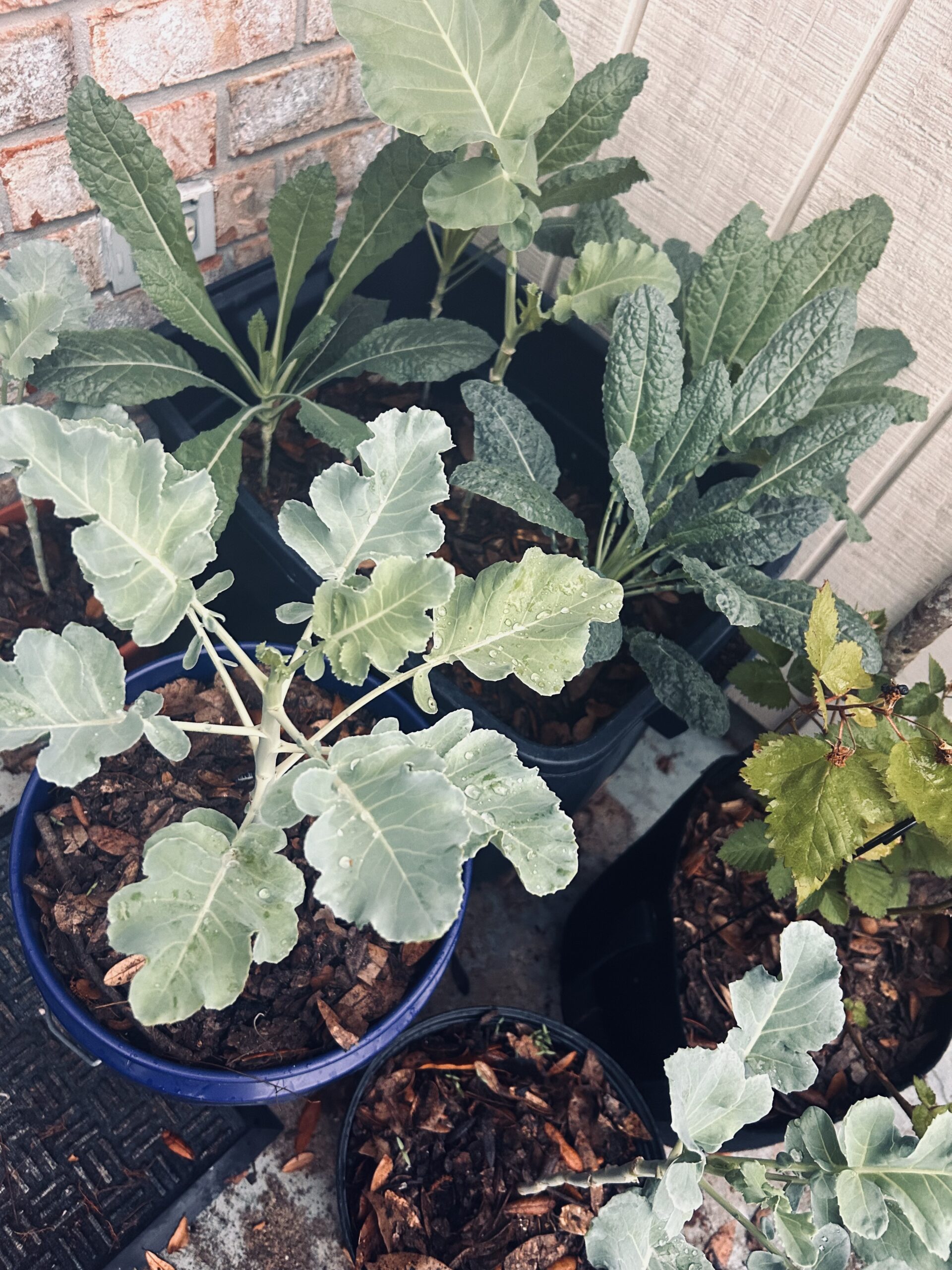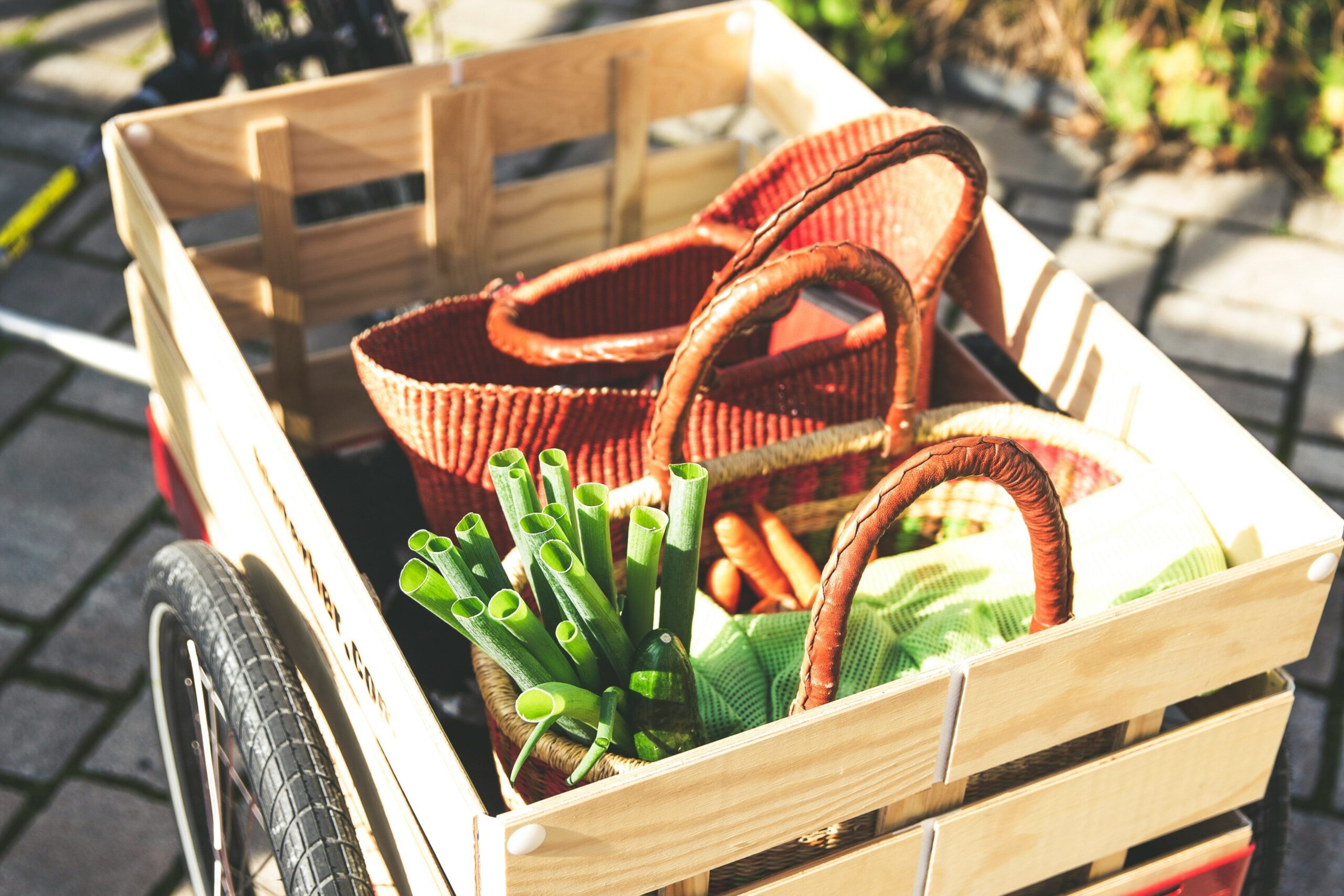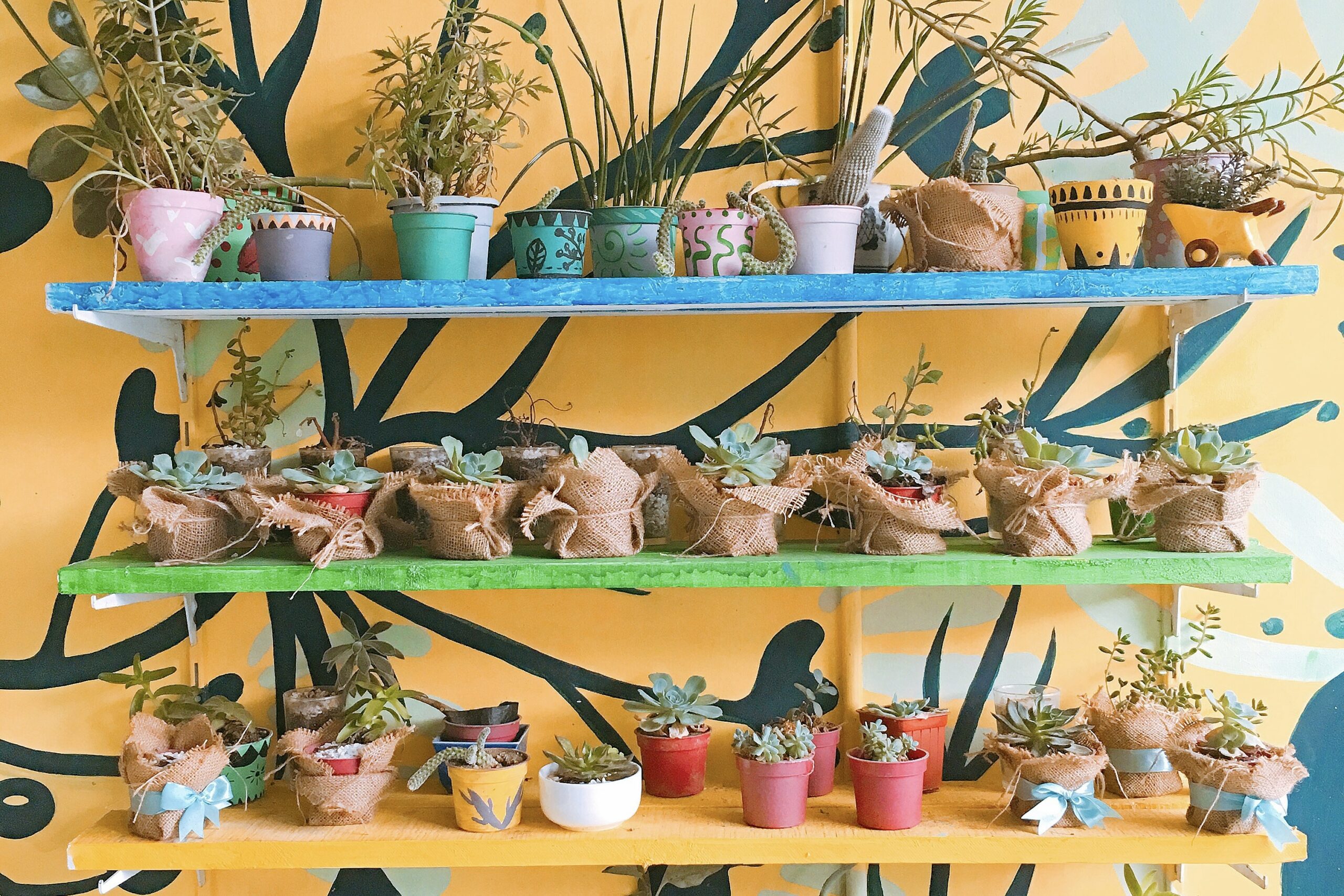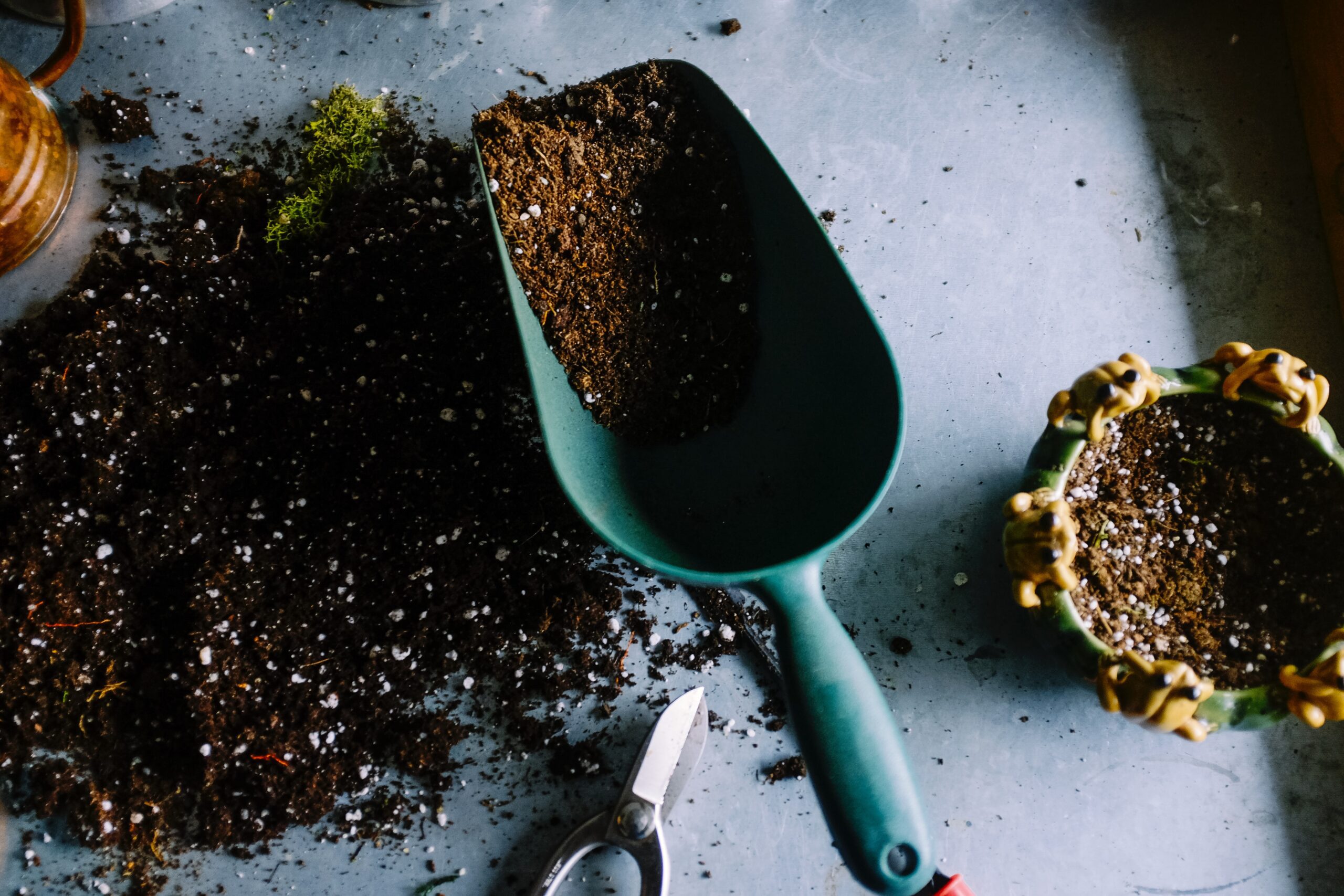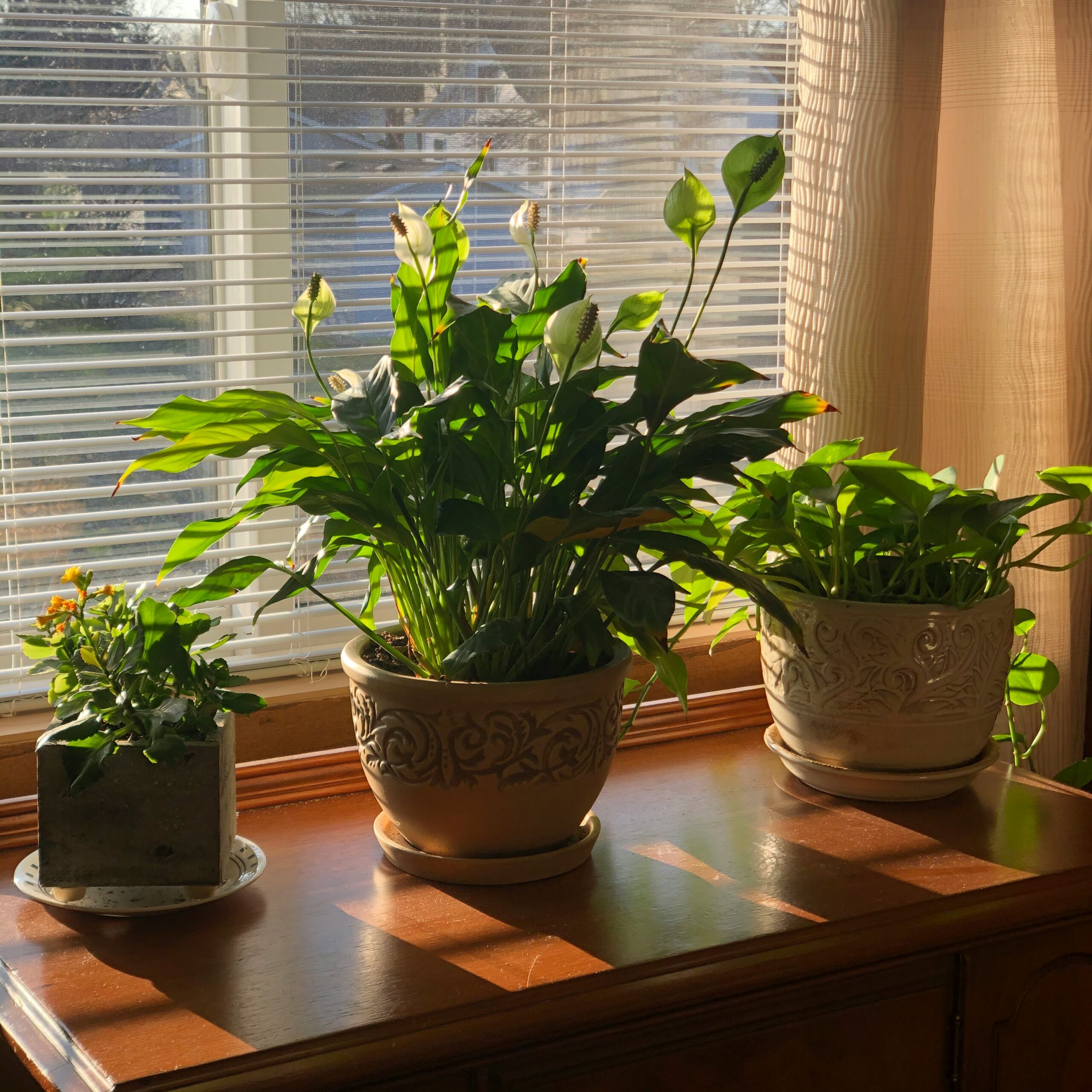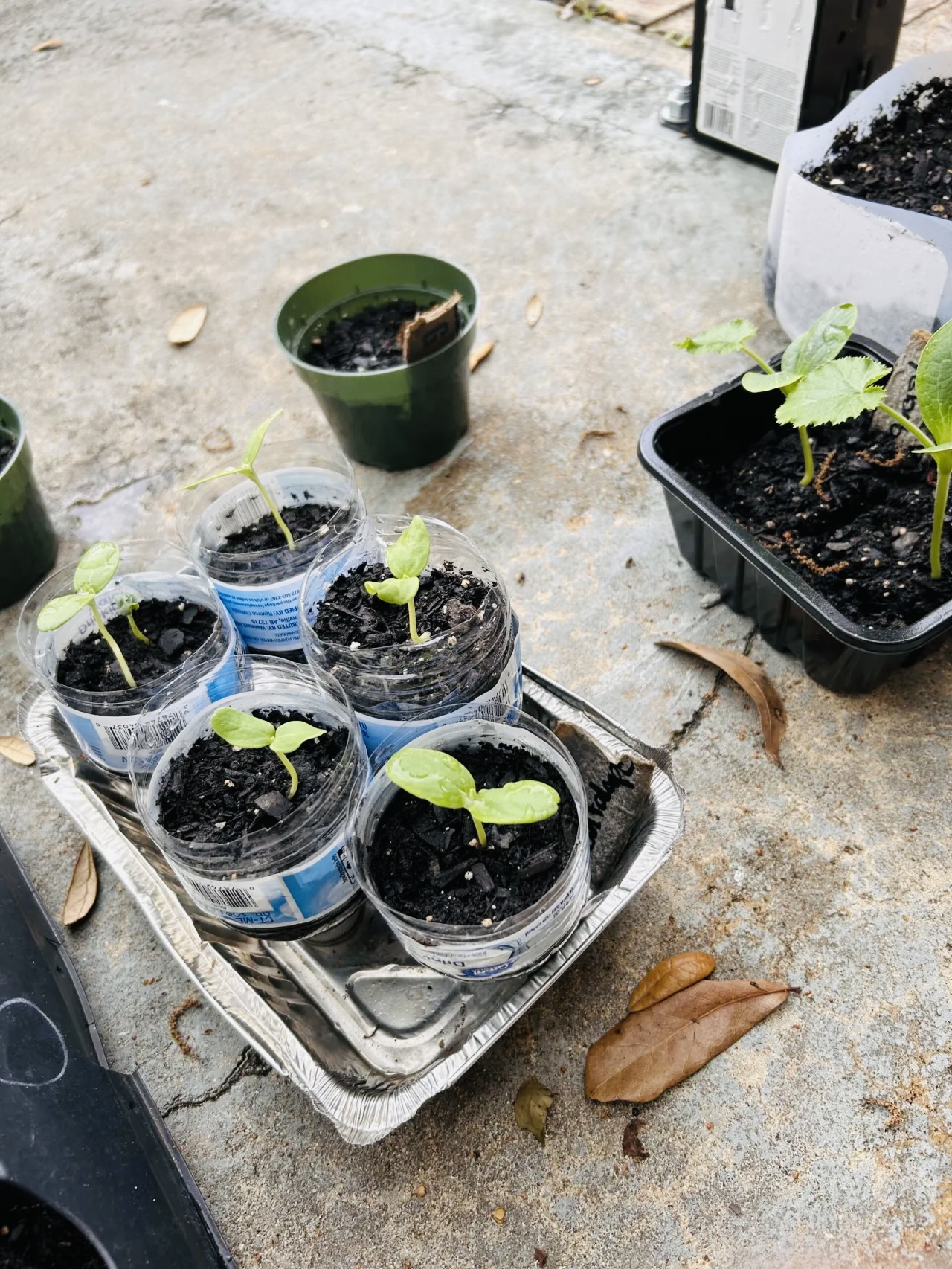This post shows you essential things you need to start a container garden!
The journey of gardening for beginners can seem daunting, especially if you’re on a budget!
Container gardening offers a practical and rewarding solution for smaller spaces without a lot of land.
It comes with a wide range of benefits and we’ll go over the essential items you need to ensure success.
You can find these items second hand or find them at budget stores like Dollar Tree or Ollie’s. Learn to green up your space without breaking the bank!
What is a container garden?
A container garden is a versatile gardening method that utilizes pots, planters, or other containers to grow plants, flowers, herbs, or vegetables.
Unlike traditional in-ground gardening, container gardening allows individuals to cultivate plants in a controlled environment, making it ideal for small spaces such as balconies, patios, or windowsills.
Benefits of starting a container garden
Container gardening offers a myriad of benefits that make it accessible and appealing to individuals of all ages:
- Grow in smaller spaces. Perfect for urban dwellers or those with limited outdoor space, container gardening maximizes growing potential in a small area.
- Inclusive to everyone. Containers can be placed at various heights, making gardening accessible to individuals with mobility challenges or those who prefer standing or sitting while gardening.
- Better control. Container gardening provides greater control over soil quality, drainage, and watering, minimizing the risk of weeds, pests, and diseases.
Container gardening opens a world of possibilities for urban dwellers, balcony owners, or anyone with limited outdoor space.
Whether you’re a beginner or a seasoned gardener, having the right tools and supplies can make all the difference in your success.
17 Things You Need to Start a Container Garden
1. Quality Containers
Search for containers that have drainage holes and are the right size for your plants! Check out stores for pots with durable materials like terracotta, ceramic, and stone. If your budget is tight, your first stop should be plant nurseries, where they get in major shipments and may hand them out plastic pots for free. Go on a scavenger hunt for pots at the lowest prices near you!
2. High-Quality Potting Mix
Invest in a premium potting mix or create your own blend using equal parts compost, perlite, and peat moss. A well-draining and nutrient-rich soil mix will support healthy root growth and one of the most important things you need to start a container garden. You can recycle potting soil every season as long as you replenish with compost.
3. Watering Can or Hose
Ensure there is easy access to water for your container garden with a watering can or hose. Consistent watering is crucial for container plants, especially during hot weather or periods of drought. If you’re the forgetful type, invest in a timer to make sure your plants are receiving consistent moisture.
4. Hand Trowel
A hand trowel is an essential tool for planting, transplanting, and maintaining container plants. Choose a sturdy, ergonomic trowel that feels comfortable in your hand for extended use. These will come in handy for repotting, cleaning up dirt, mixing, etc.
5. Pruning Shears
Keep your container garden tidy and healthy with a pair of pruning shears. Use them to trim dead or damaged foliage, shape plants, and encourage bushier growth. Scheduled maintenance will keep pests and disease at bay. It’s the simple things you need to start your garden!
6. Fertilizer
Provide essential nutrients to your container plants with a balanced fertilizer made for container gardening. Choose a slow-release or liquid fertilizer and follow package instructions for best results. Homemade compost is the best fertilizer you can use and a great first step to becoming more sustainable.
7. Mulch
Sprinkle mulch on your potted plants to help conserve moisture, suppress weeds, and regulate soil temperature. Go with shredded bark, straw, or compost to improve soil health and reduce watering frequency. More options include grass clippings or newspaper. And if you’re fancy, go with stones for a more cohesive and clean look!
8. Plant Labels
Keep track of your container garden with plant labels or markers. No matter how good you think your memory is, once plants start sprouting up everywhere, Mother Nature will have you confused! Label each container with the name, variety, and planting date to avoid confusion and track plant growth and performance.
9. Gardening Gloves
Protect your hands from thorns, splinters, and soil with a pair of gardening gloves. Choose gloves made from durable materials like leather or synthetic leather for maximum protection and comfort. Sometimes it feels good to have the bear dirt on your hands to ground yourself but for those days when you don’t, a good pair of gardening gloves will come in handy!
10. Sunscreen
Stay safe while tending to your container garden with a broad-spectrum sunscreen. Apply sunscreen with an SPF of 30 or higher to exposed skin to prevent sunburn and reduce the risk of skin cancer. Extreme temperatures are becoming more common. If garden on a balcony, you are also at risk due to the sunlight reflecting from the buildings and windows. Stay safe!
11. Watering Timer
For busy gardeners or those prone to forgetting to water, a watering timer can be a lifesaver. Set a timer to automatically water your container garden at designated intervals, ensuring plants receive consistent moisture. These are especially useful on hot days so your plants don’t end up stressed!
12. Saucers or Drip Trays
Prevent water damage to your balcony or patio with saucers or drip trays placed under containers. These catch excess water runoff and prevent it from staining or damaging surfaces. Go to thrift stores and find interesting plates and other ideas as a fun and eclectic decor item to your space!
13. Pest Control
Keep pests at bay with natural or organic pest control solutions. Natural options include insecticidal soap, neem oil, or diatomaceous earth, which are safe for use around children, pets, and beneficial insects.
14. Trellises or Supports
Support climbing or vining plants with trellises, stakes, or cages. Provide vertical support for plants like tomatoes, cucumbers, or peas to maximize space and encourage upward growth. Create a natural and rustic look by using branches or DIY your own from bamboo sticks.
15. pH Meter
Monitor soil pH levels with a pH meter to ensure optimal growing conditions for your container plants. Most plants prefer slightly acidic soil, so adjust pH levels as needed with lime or sulfur. If you’re a beginner growing vegetables, a pH meter will be one of those things you need to start your garden to ensure best results!
16. Insect Netting
Protect container plants from common garden pests like aphids, caterpillars, or beetles with insect netting. Cover vulnerable plants with lightweight netting to prevent pest damage and reduce the need for chemical pesticides. During those hot summer months, netting is crucial thing you need to start your container garden and can make the difference of a successful harvest at the end of season!
17. Garden Journal
Track planting dates, growth progress, and gardening observations in a gardening journal. Keep notes on plant varieties, pest and disease issues, and successful growing techniques to inform future gardening endeavors and improve your container gardening skills. It’s fun to look back on your progress and how much you improved in a short amount of time!
This post has shown you 17 things you need for a successful and thriving container garden!
With these items, you’ll be well-equipped to create a productive garden. Whether you’re growing flowers, herbs, vegetables, or fruits, proper planning and preparation are key to success. So gather your supplies, roll up your sleeves, and get ready to enjoy the bountiful rewards of your container garden!
